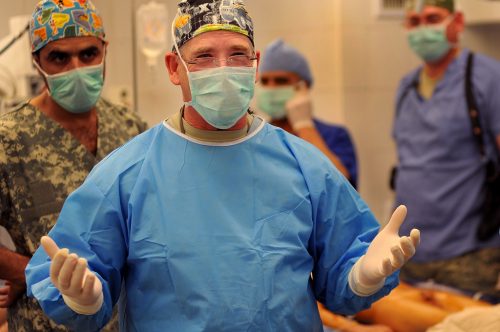La cervical fusion surgery is a common procedure for treating problems with cervical spine. However, as with any surgery, there are risks and potential complications that patients should be aware of before making the decision to undergo the procedure.
In this article, we will discuss some of the most common complications associated with cervical fusion surgery, as well as steps patients can take to minimize the risk of encountering them.
Cervical Spine Anatomy
La cervical spine is made up of seven vertebrae, which are stacked on top of each other. The vertebrae are connected by intervertebral discs, which act as shock absorbers.
The cervical spine also has several ligaments and muscles that help stabilize it. The vertebrae are numbered from C1 to C7, C1 being closest to the skull and C7 being closest to the chest.
The cervical spine is very flexible, allowing the head to move in all directions. However, this flexibility also makes the cervical spine susceptible to injury. It is therefore important to be careful when participating in activities that can cause neck injuries.
The parts of the cervical spine that can be damaged are the vertebrae and intervertebral discs. Vertebrae can fracture or dislocate, and discs can rupture or herniate.
Cervical arthrodesis What is it exactly? Definition
arthrodesis is a surgical procedure which involves the fusion of two bones. In the cervical spine, this surgery is used to treat conditions such as degenerative disc disease, instability and deformity.
The procedure is usually performed through an incision in the front or back of the neck. The surgeon begins by removing any damaged or diseased tissue between the bones to be fused. Then screws and metal rods are used to hold the bones in place while they heal. In some cases, a bone graft can also be used to promote healing.
The operation usually lasts several hours and patients usually remain hospitalized for several days. Cervical fusion is a very effective treatment for many spinal pathologies and can help improve patients' quality of life.
If you are considering a cervical fusion surgery, it is important to be aware of the potential complications that can arise. However, with proper preparation and care, the majority of patients experience no complications.
If you experience complications, they are usually minor and can be easily treated.
For more information on cervical fusion surgery and the potential complications associated with it, please see the following article.
Postoperative complications of cervical arthrodesis: When to worry?
When cervical arthrodesis is performed to treat degenerative disease or instability of the cervical spine, the goal is to produce a strong union between two or more vertebrae.
This procedure uses bone grafts and/or metal implants to fuse the vertebrae together, and it can be very effective in relieving pain and restoring spinal stability.
However, as with any surgery, there are risks and postoperative complications can occur. The most common complications after a cervical arthrodesis are infection, implant failure and bone graft resorption.
Less common but more serious complications include neurological deficits and vascular lesions. Most complications can be successfully treated if detected early.
It is therefore important for patients to be aware of the signs and symptoms that may signal a problem. With a fast processing, the majority of patients who experience cervical arthrodesis can expect significant pain relief and improved quality of life.
Potential complications
Un certain number potential complications can arise after surgery to fuse the bones of the cervical spine. One of the most common is hardware failure, which can lead to spinal instability and additional pain.
Another Complication common is pseudarthrosis, or the formation of false joints, which can also cause pain et instability. Also, patients may experience problems with the nerves or blood vessels around the operation site.
This can lead to a numbness, tingling or weakness in the arms or hands. In rare cases, it can also lead to paralysis.
Finally, patients may also suffer an infection at the site of the operation. If any of these complications occur, it is important to see a doctor as soon as possible.
Treatment for these complications may vary from case to case, but may include additional surgery, physiotherapy (physical therapy) or medication.
Warning signs to consider
If, after undergoing cervical arthrodesis, you experience persistent or limiting pain the features considerably of your body, it is important to consult your doctor.
While most patients experience a pain relief and an improvement in their quality of life after the operation, some may experience complications that require treatment.
Early diagnosis and intervention are key to achieving the best possible outcomes.
Sequelae and prognosis of cervical arthrodesis
Most patients undergoing cervical arthrodesis are well and can resume their daily activities in the weeks following the procedure.
However, it is important to follow your doctor's instructions exactly and to be patient during your recovery period.
Some patients may suffer from stiffness or total loss of mobility in the neck, and this is more common in patients over 60 years old. In most cases, this is temporary and does not require further treatment.
Other patients may suffer from permanent loss neck mobility or other long-term sequelae. These side effects are rare, but they can have a significant impact on a patient's quality of life.


